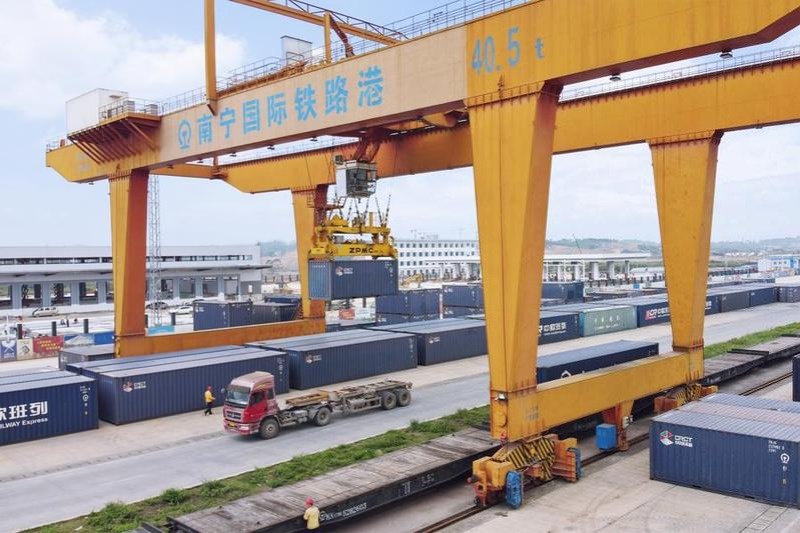HK takes lead in stablecoin regulation as China explores a digital future

On May 30, Hong Kong made history by enacting the world's first dedicated legislation specifically governing fiat-referenced stablecoins — the Stablecoins Ordinance. With a commencement date of Aug 1, the new legislation represents a milestone in the global regulation of digital assets, positioning the city as a front-runner in shaping the future of digital finance.
As jurisdictions across the globe — from the United States and the European Union to emerging markets — race to stake their claim in the growing stablecoin arena, Hong Kong's move is widely viewed as a strategic play to capture first-mover advantage in global competition.
Less discussed, but equally significant, is the broader strategic context behind Hong Kong's push: the effort to elevate the global status of the Chinese renminbi in the digital era. By establishing a legal foundation for stablecoin issuance, the ordinance opens the door to new possibilities for the cross-border use of the digital yuan or e-CNY, while offering a valuable reference point for potential stablecoin adoption in other parts of China.
For readers unfamiliar with the concept, a stablecoin is a digital currency that is built on blockchain technology and pegged to fiat currencies or other real-world assets at a designated exchange rate to maintain a stable value. Fiat-referenced stablecoins are backed by government-issued fiat currencies.
Upon implementation of the Stablecoins Ordinance, any person who issues a fiat-referenced stablecoin in Hong Kong, or issues the cryptocurrency that purports to maintain a stable value with reference to Hong Kong dollars in or outside Hong Kong will need to obtain a license from the Hong Kong Monetary Authority. The relevant persons must satisfy requirements in areas such as reserve asset management and redemption.
Clearly, the ordinance is setting a global policy benchmark. Its value-anchored regulatory philosophy builds upon existing international regulatory frameworks while introducing meaningful innovations — offering a potential blueprint for the future governance of stablecoins worldwide.
The ordinance provides a clear legal foundation for the development of the stablecoin market in Hong Kong, offering regulatory certainty for institutions and investors and paving the way for innovation in the regional stablecoin ecosystem.
In addition, as an international financial center, Hong Kong already possesses a well-developed financial market and a vibrant community of financial institutions. By taking the lead in enacting stablecoin legislation, the city has, to a certain extent, alleviated the concerns of traditional financial institutions about participating in the stablecoin market.
This move is also expected to attract more innovative stablecoin issuers, exchanges and related entities, thereby enhancing Hong Kong's position and influence in the stablecoin space and securing a first-mover advantage in the global market.
In fact, Hong Kong has long positioned financial technology as a key pillar of its strategy to strengthen its role as a global financial hub. The "Fintech 2025" strategy, introduced by the Hong Kong Monetary Authority, laid the groundwork with initiatives such as digital banking reforms, research of central bank digital currencies, data infrastructure development, fintech talent pipelines and regulatory innovation.
These efforts have already borne fruit. In recent years, the HKMA has actively participated in multiple digital currency projects including mBridge, e-HKD and Ensemble.
With the Stablecoins Ordinance now in place, these pilot experiments can be quickly translated into commercial products, accelerating the formation of a comprehensive stablecoin ecosystem in Hong Kong.
The ordinance also carries demonstration significance for the rest of China. While the Chinese mainland maintains a cautious stance toward stablecoins due to financial stability considerations — focusing instead on the development of e-CNY — Hong Kong's experience could serve as a testbed for regulatory innovation.
While issuing a renminbi-backed stablecoin is not yet feasible given the current legal framework, Hong Kong's ordinance can serve as a regulatory pilot, offering insights for the central government in evaluating stablecoin oversight effectiveness and avoiding regulatory loopholes.
Equally important, the development of stablecoins pegged to the Hong Kong dollar could also play a complementary role in the internationalization of the renminbi.
Over the past few years, Hong Kong has worked closely with the mainland on cross-border digital currency initiatives. Notably, the HKMA and the People's Bank of China have conducted joint trials for cross-border e-CNY payments, achieving technical breakthroughs such as interoperability with Hong Kong's Faster Payment System and the use of e-CNY hardware wallets in the city.
With stablecoin issuance now legally enabled, Hong Kong is in a unique position to integrate e-CNY with the stablecoin ecosystem. For instance, by enabling conversion into stablecoins pegged to the Hong Kong dollar, e-CNY could be integrated into the broader stablecoin ecosystem, expanding its role in cross-border settlement.
Such synergy may allow China to explore innovations for cross-border payments, which can help reduce costs, improve efficiency and reduce reliance on SWIFT, the world's leading system of secure financial messaging services.
While currency digitalization does not equate to internationalization, in the digital era, the former has become an essential component of the latter.
Through the development of cross-border payment systems like the Cross-Border Interbank Payment System or CIPS, along with the promotion of e-CNY and Hong Kong's stablecoin, China is improving cross-border payment efficiency while reducing reliance on the US dollar-based clearing and settlement system.
This is happening as the international influence of the US dollar is showing signs of weakening, though it still holds a crucial position in the global financial system.
The US government has been actively working to consolidate the dollar's dominance and has repeatedly used its monetary hegemony to impose sanctions on developing countries, further intensifying the competition among global currencies.
In this new landscape, China has been exploring the internationalization of the renminbi, deepening regional cooperation that helps raise the renminbi's share in foreign trade transactions while increasing the attractiveness of renminbi-based payments.
In May, the PBOC and Indonesia's central bank agreed to extend cooperation in local currency settlements to all transactions including capital and financial accounts while agreeing with its Brazilian counterpart to expedite the interlinking of cross-border QR code payment systems.
Meanwhile, CIPS and the Central Bank of the UAE signed a memorandum of understanding to provide local currency clearing services for financial institutions in the Middle East and North Africa.
Overall, by leveraging a dual engine of "financial application scenarios + technological innovation", China can further improve global acceptance and recognition of renminbi-based clearing and settlement.
This, in turn, will support the internationalization of the renminbi, promote the diversification of the international monetary system and help safeguard global financial stability.
The writer is executive vice-president of Renmin University of China's Shenzhen Research Institute, executive dean of RUC's Institute of Advanced Social Sciences (Shenzhen) and deputy director of RUC's International Monetary Institute.
The views do not necessarily reflect those of China Daily.




































